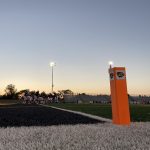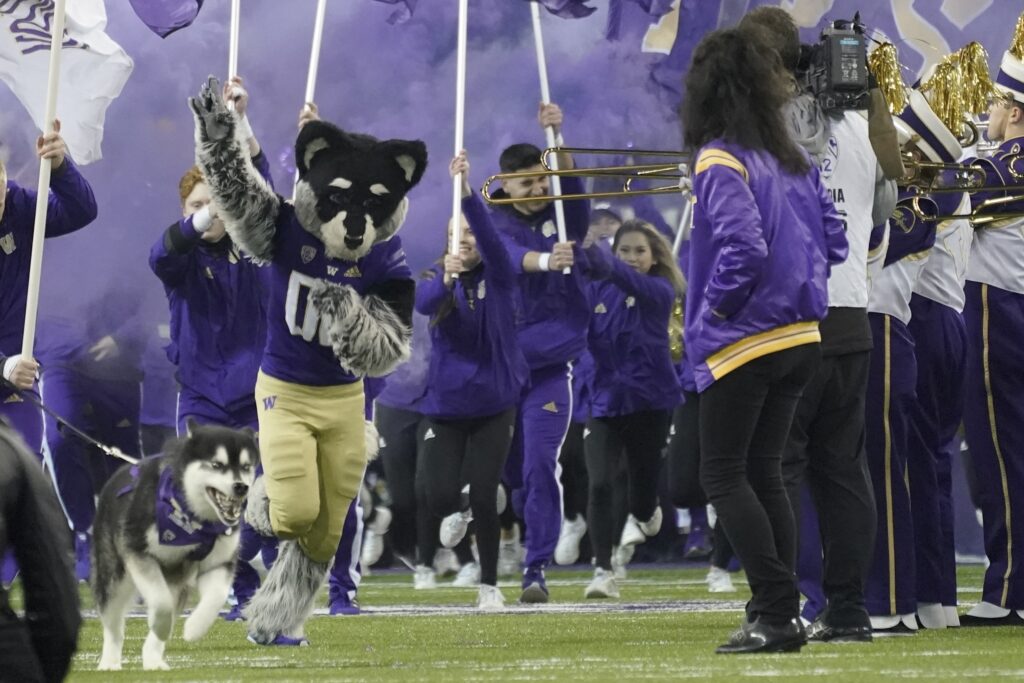The Hotline is delighted to provide Pac-12 fans with a regular dive into the recruiting process through the eyes and ears of Brandon Huffman, the Seattle-based national recruiting editor for 247Sports. He submitted the following report on Oct. 19 …
UW’s big moment
With all eyes on Husky Stadium, Washington couldn’t have made a bigger impression than it did in the victory over Oregon.
With elite recruits from throughout the region in attendance, including the top uncommitted players in California and Washington, a second consecutive victory over the Ducks certainly resonated.
The Huskies are locked into key recruiting battles with Oregon for two prospects in the 2024 class: Fairfield (Calif.) defensive lineman Jericho Johnson and Seattle running back Jason Brown.
Johnson has a final four of Oregon, USC, Utah and Washington, while Brown has a final three of Michigan State, Oregon and the hometown Huskies.
A four-star recruit, Johnson raved about his trip to Montlake.
He had previously taken an official visit to campus in June, and the Huskies got him back for the Oregon showdown.
Now they must wait out his official visit to USC — he plans to watch the Trojans play Washington in November — and to Utah, which is scheduled for next weekend when the Utes host Oregon.
And he still will have an official visit to Oregon.
In contrast, Brown hasn’t taken his official visit to either Oregon or Washington. While he’s been leaning to the Ducks, his hometown school left a big impression. Brown was on the field when the fans rushed it following the game.
More importantly, several key 2025 targets attended the game, including Danville (Calif.) edge rusher Marco Jones, the No. 2 prospect in Northern California; Spanaway (Wash.) linebacker Zaydrius Rainey-Sale, the No. 1 recruit in the state per the 247Sports Composite; and UW’s biggest quarterback targets in 2025, Jackson Kollock of Laguna Beach (Calif.) and Husan Longstreet of Corona (Calif.).
The Huskies also had the state’s No. 1 prospect in the 2026 class in attendance for the victory: Sammamish tackle Kodi Greene.
Given the recruiting adage that you make the biggest in-season impact with juniors and sophomores, it appears the Huskies hit their mark.
Not all lost for the Ducks
It was quite a 24-hour period for defensive lineman Aydin Breland, the No. 1 recruit in California in the class of 2024.
On Friday night, Breland and his Santa Ana (Calif.) Mater Dei Monarchs, unbeaten and No. 1 in the country, were shut out by their archrival, Bellflower St. John Bosco.
The next day, about an hour before kickoff in Seattle, Breland announced that he would be playing for Oregon, choosing the Ducks over Georgia and Miami.
Of course, shortly after that, the Huskies spoiled the Ducks’ Saturday.
But coach Dan Lanning’s emphasis on building a strong defensive line was bolstered by Breland’s commitment.
And Oregon remains well positioned for both Johnson and Elijah Rushing, a coveted edge rusher from Tucson.
Portal problems
Few teams out West have used the NCAA transfer portal the last two years like Colorado and USC. And few teams have used it so consistently for so long as UCLA.
With all three losing over the weekend, the common question asked was: Are teams placing too much emphasis on the portal?
For Colorado, the answer is an emphatic no. The portal made a ton of sense. The Buffaloes needed a hard reset on that roster and got it with new coach Deion Sanders and more than 40 transfers.
But what about USC and UCLA?
The schools had tremendous production from transfers a year ago — Trojans quarterback Caleb Williams won the Heisman Trophy after transferring from Oklahoma; and Bruins tailback Zach Charbonnet excelled after starting out at Michigan — but they are experiencing issues up front this fall due to a reliance on the portal.
Just because you hit the jackpot with a few transfers doesn’t mean every transfer will work.
For every Michael Penix Jr. and Bo Nix, there is a Phil Jurkovec or J.T. Daniels.
For every Laiatu Latu, the dynamic UCLA pass rusher, there is an edge player who doesn’t shine despite the change of scenery.
In other words, high school recruiting and old-fashioned player development are still essential.
For example, consider Oregon State’s Taliese Fuaga, the reigning Pac-12 Offensive Lineman of the Week. Jim Michalczik, the Beavers’ veteran offensive line coach, knew Fuaga was a project when he signed him in the class of 2020. And now, Fuiaga is one of the stars of the conference.
The plug-and-play approach, which both UCLA and USC have attempted, leads to a lack of cohesiveness on the offensive lines and intense pressure on quarterbacks.
That can work when they’re mobile and experienced, like USC’s Williams, but it can be a huge issue when they’re young and inexperienced, like UCLA freshman Dante Moore.
The portal can be a quick fix for new coaches or rosters that need an overhaul. But it’s a slippery slope to focus solely on that aspect of the roster-building process, especially for a coach who, like UCLA’s Chip Kelly, is in his sixth season.
*** Send suggestions, comments and tips (confidentiality guaranteed) to pac12hotline@bayareanewsgroup.com or call 408-920-5716
*** Follow Huffman on Twitter via @BrandonHuffman and support @AveryStrongDIPG
*** Follow me on Twitter: @WilnerHotline
*** Pac-12 Hotline is not endorsed or sponsored by the Pac-12 Conference, and the views expressed herein do not necessarily reflect the views of the Conference.
Related posts:

(AP Photo/Ralph Freso, File)
Huffman – Pac-12 recruiting update: Fallout at ASU, big wins by Washington and Oregon, and a huge opportunity this week for Oregon State Huffman – Pac-12 recruiting: Huge weekend for Cal while Oregon and L.A. schools also welcome 2024 recruits
Huffman – Pac-12 recruiting: Huge weekend for Cal while Oregon and L.A. schools also welcome 2024 recruits
 Huffman – Pac-12 Recruiting Roundup, Key Targets for next November
Huffman – Pac-12 Recruiting Roundup, Key Targets for next November
 Huffman on Pac-12 recruiting: Cal and UCLA roll on, Oregon State comes alive and Stanford goes national
Huffman on Pac-12 recruiting: Cal and UCLA roll on, Oregon State comes alive and Stanford goes national
Jon Wilner
Jon Wilner has been covering college sports for decades and is an AP top-25 football and basketball voter as well as a Heisman Trophy voter. He was named Beat Writer of the Year in 2013 by the Football Writers Association of America for his coverage of the Pac-12, won first place for feature writing in 2016 in the Associated Press Sports Editors writing contest and is a five-time APSE honoree.
